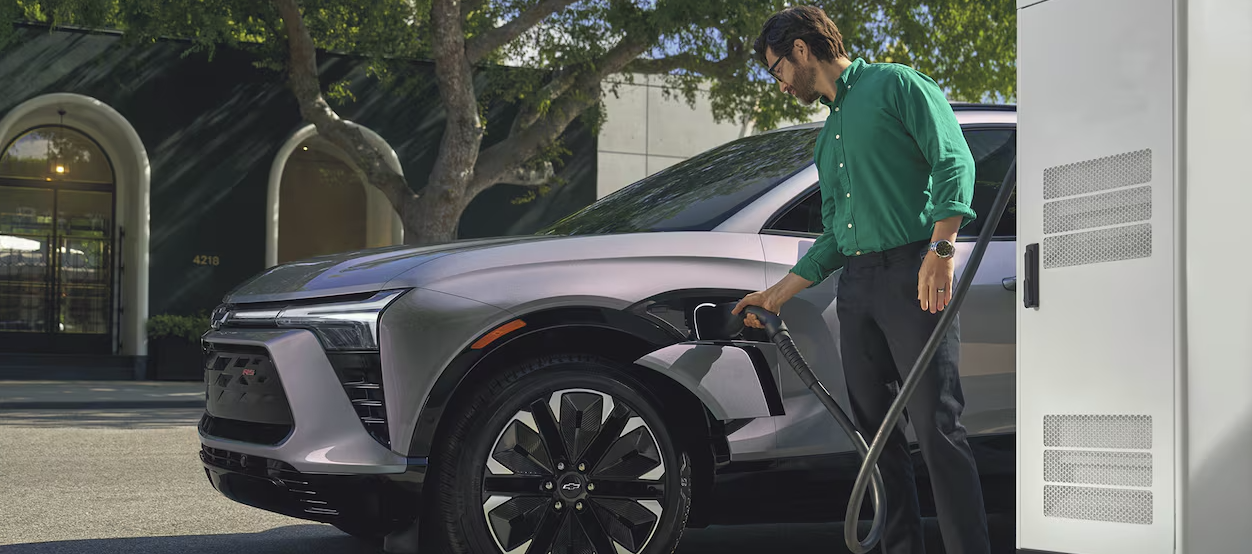Road Trips in an Electric Vehicle – Tips for the Best Journey
Road Trips in an Electric Vehicle – Tips for the Best Journey
Posted on May 7, 2025
Can You Take Road Trips in an Electric Vehicle?
Taking an electric vehicle (EV) on a road trip is more feasible than ever, especially with the growing network of charging stations across Canada. Before embarking on your adventure, it's essential to plan your route with charging stations in mind. Use apps and websites that show EV charging locations along the way. This way, you can ensure that your car's battery stays charged without straying too far from your planned stops. Knowing where to charge is key to making long drives easier and stress-free.
Know Your Vehicle’s Range
Every EV has a different driving range based on its battery capacity and driving conditions. For instance, the 2025 Chevrolet Bolt EV can go up to 417 kilometres on a full charge. Knowing your vehicle’s range allows you to plan breaks effectively. You don’t want to get stuck running low on power. Always factor in a bit of buffer in case your driving conditions aren’t ideal, such as when there’s a headwind or a rough patch of road. Knowing how far you can go before needing a charge will help you manage your trip better.
Time Your Breaks with Charging Stops
One of the main differences between a road trip in a gas-powered vehicle and an EV is the need for charging stops. Fortunately, these breaks don’t have to be a hassle. Time your stops so that you can relax and recharge both your car and yourself. Many modern charging stations are conveniently located near amenities like cafes, restaurants, and even shopping centres. This gives you a chance to stretch your legs, grab a bite, and plan the next leg of your trip while your EV gets the juice it needs.
Consider the Impact of Weather
The weather can significantly impact the range of your EV. Cold temperatures, for example, can reduce battery efficiency. In Saskatchewan, where winter temperatures can dip well below freezing, it’s crucial to factor in extra time for charging during colder months. During hot summer days, air conditioning usage can also drain your battery faster. To combat this, keep your EV in a garage when possible or park in shaded areas to reduce battery stress.
Pack a Charging Cable
While most public charging stations provide cables, it’s always a good idea to pack your own EV charging cable. This ensures that you’re prepared if you encounter a station with no available cable or if the one provided doesn’t work with your vehicle. With a portable charging cable, you can also take advantage of other charging options, such as home chargers at EV-friendly accommodation.
Choose EV-Friendly Accommodation

When planning your road trip, look for hotels or inns that offer EV charging stations. Many hotels across Canada are installing charging stations, especially in regions like Saskatchewan, where the demand for EV-friendly accommodation is increasing. Choosing a place that offers charging makes your trip much smoother, and you won’t have to worry about finding a station during your stay.
Save Money on the Road
While the initial cost of an EV might seem high, the savings on fuel and maintenance over time can make road trips in these vehicles quite economical. Charging your EV at home or using public stations (especially those that offer free charging) can save you money compared to the high cost of gasoline. Plus, with many EVs offering energy-efficient features, you’ll get more kilometres per dollar spent on power than you would on traditional fuel.
Planning a road trip in an electric vehicle is no longer a daunting task. By taking these simple steps, you can enjoy the journey and make the most out of your road trips while driving an eco-friendly car. If you’re ready to take your first road trip in an EV, stop by McMillan Motor in Kipling, SK, to explore the wide range of electric vehicles available today.
